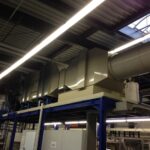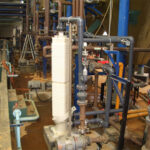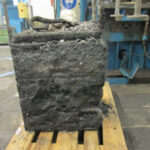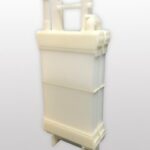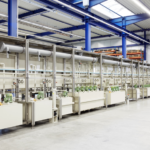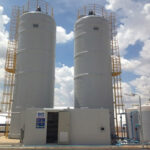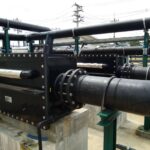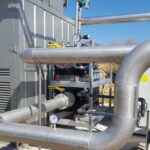Case study no. 11:
Biogas small
Initial situation
During the production of biogas, toxic and corrosive hydrogen sulphide gas and ammonia are produced in the fermenter, which must be removed from the gas flow.
This serves to prevent high operating costs during the subsequent combustion of the biogas. Furthermore, sulphur dioxide is produced during combustion, which pollutes the environment even in low concentrations.
Task definition
The hydrogen sulphide and ammonia must be removed from the biogas. This is to be achieved by condensation. To do this, the biogas is brought below the dew point temperature of the hydrogen sulphide.
It is then slightly reheated to reduce the relative humidity of the biogas so that it can be used as fuel without any problems. To do this, the operator needs heat exchangers that are corrosion-resistant. At the same time, they must be pressure-resistant and easy to clean, as the gas can become very dirty.
Solution
Calorplast biogas heat exchangers are the perfect solution. Thanks to the integrated all-plastic module, both cooling with condensation and subsequent heating can be realized. At the same time, the housing design offers easy handling. All this in a completely corrosion-proof environment

Result
The customer can use the biogas exchanger for many years without any problems.Bio


